Deep in the cloud forests of South America, a remarkable avian performance takes place. The male Club-winged Manakin beats its specially modified wing feathers at nearly imperceptible speeds, producing a high-pitched sound that reverberates through the forest. This extraordinary adaptation represents one of nature’s most fascinating examples of sonation – the production of non-vocal sounds for communication.
Unlike the songs produced by a bird’s syrinx (vocal organ), these mechanical sounds demonstrate the incredible evolutionary pathways that have developed in the pursuit of reproductive success. The Club-winged Manakin’s unique performance stands as a testament to the remarkable diversity of adaptations in the avian world and the power of sexual selection to drive extraordinary physical and behavioral traits.
The Remarkable Club-winged Manakin
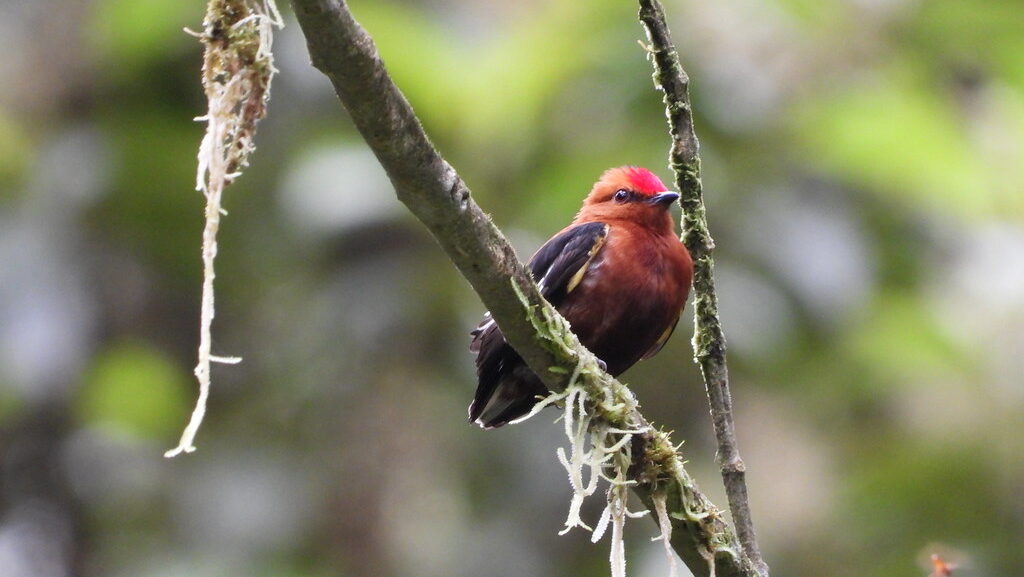
The Club-winged Manakin (Machaeropterus deliciosus) belongs to the Pipridae family, a group known for their elaborate courtship displays. Native to the western slopes of the Andes in Colombia and Ecuador, these small birds measure just 3.5 inches (9 cm) in length and weigh less than half an ounce. Males sport a striking crimson crown and rump with an olive-green back, while females display more subdued olive-green plumage that provides excellent camouflage in their forest habitat.
What truly distinguishes this species, however, is not its coloration but rather the specialized wing structures of the male birds that enable their unique sound production. These birds inhabit humid montane forests at elevations between 300-1500 meters where their remarkable displays have evolved in the dense understory of these biodiverse ecosystems.
The Anatomy of Buzzing Wings
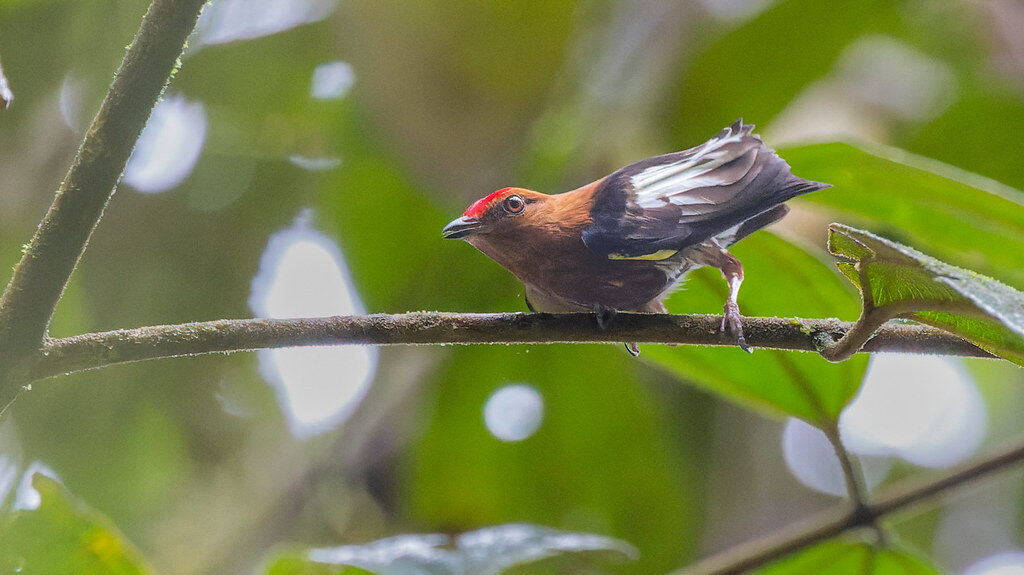
The male Club-winged Manakin possesses a specialized anatomical adaptation that makes its acoustic performance possible. The bird’s seventh and eighth secondary feathers (counted from the outermost wing feather) are dramatically modified, featuring thickened, hollow shafts and stiffened vanes that resemble tiny clubs – hence the bird’s common name. These specialized feathers are approximately 60% thicker than typical feathers and have a unique bend that facilitates their interaction during rapid movement.
Additionally, the bird has developed unusually strong pectoral muscles to power the incredible wing movements required for sound production. The surrounding wing feathers have also evolved to accommodate this adaptation, creating space for the modified feathers to vibrate without interference and maximizing the acoustic output of each wing beat.
The Physics of Mechanical Sound Production
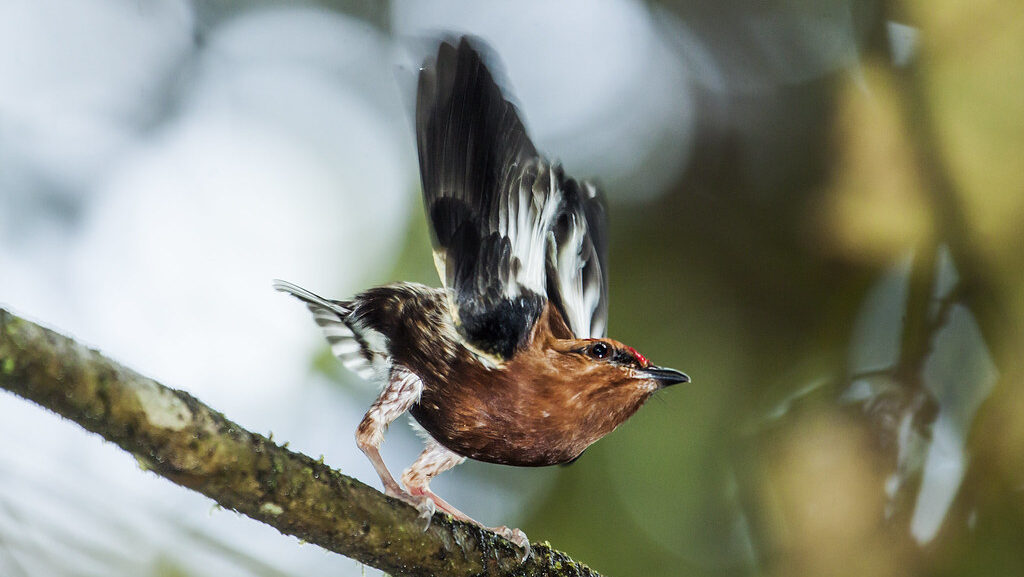
The buzzing sound produced by the Club-winged Manakin represents a fascinating example of biomechanics at work. When the bird performs its display, it holds its wings vertically above its back and vibrates them at an astonishing frequency of approximately 107 times per second – nearly twice the frequency of a hummingbird’s wing beats during hover. As the specialized club-shaped feathers rapidly strike against each other, they create a resonant vibration that amplifies the sound. This mechanism works similarly to a violin, where the bow (in this case, one feather) causes another surface (the second feather) to vibrate at a specific frequency.
High-speed camera analysis has revealed that the resulting sound waves propagate from the wings in a directional pattern that maximizes the distance the sound can travel through dense forest environments, enabling the manakin to broadcast its presence to potential mates over considerable distances.
The Distinctive Sounds of the Club-winged Manakin
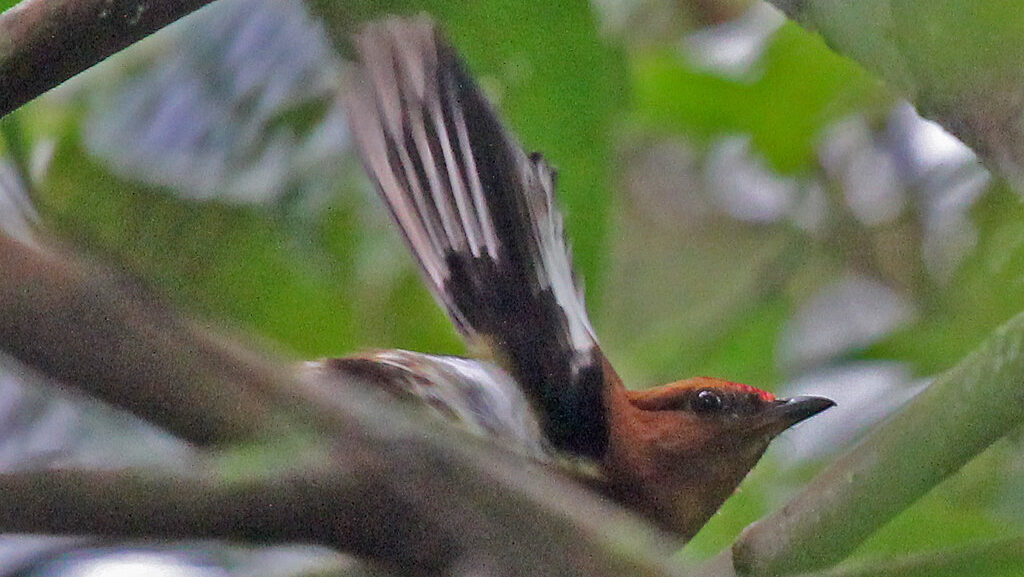
When heard in the forest, the Club-winged Manakin’s mechanical sonation produces a remarkable series of sounds that has been described as resembling electronic tones or the twang of a guitar string. The primary sound is a sharp “TINK” followed by a resonant “WEEO-weeo” that can be heard from over 50 meters away – impressive for such a small bird in dense forest undergrowth.
Researchers have discovered that these sounds occupy a unique acoustic niche in the forest soundscape, with frequencies ranging from 1.59 to 1.76 kHz that stand out from both the background noise of the environment and the vocalizations of other forest birds. Interestingly, the acoustic properties of the sounds make them particularly effective at traveling through the humid, vegetation-dense environments where these birds live, with minimal degradation over distance.
The Elaborate Courtship Display
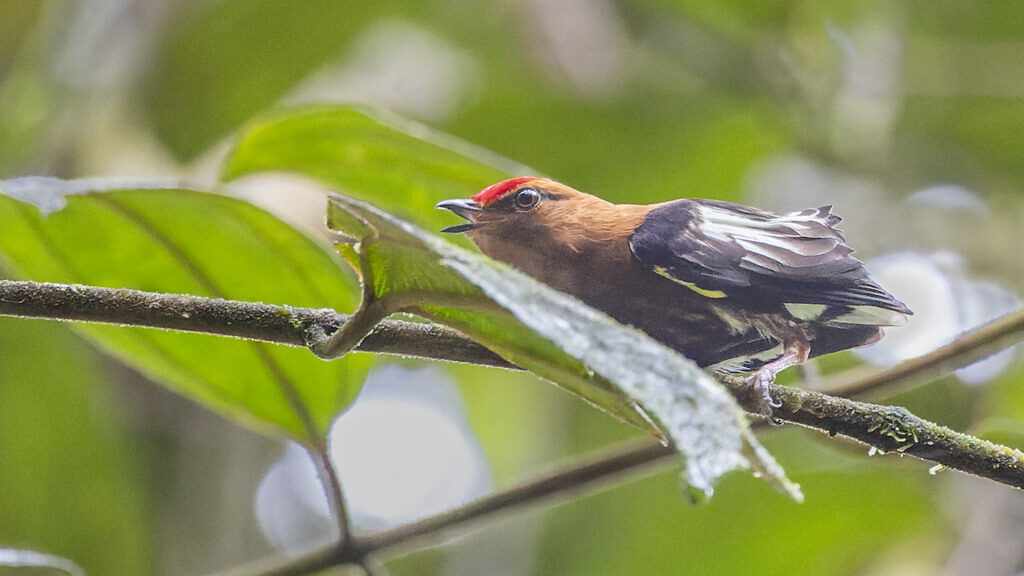
The buzzing wing sounds form just one component of an elaborate courtship ritual performed by male Club-winged Manakin. Males gather in small display areas called leks, where they compete for female attention through their performances. The full display begins with the male perched on a horizontal branch, where he first produces several sharp calls to attract attention. When a female approaches, he launches into the spectacular wing-sonation display, vibrating his specialized feathers while hopping sideways along the branch and bobbing his crimson-capped head.
Throughout this performance, the male’s body quivers with the intensity of the wing movements, creating a visual spectacle that complements the acoustic display. This multi-sensory performance can continue for several minutes, with males sometimes performing hundreds of displays per day during the height of breeding season.
Evolution Through Sexual Selection
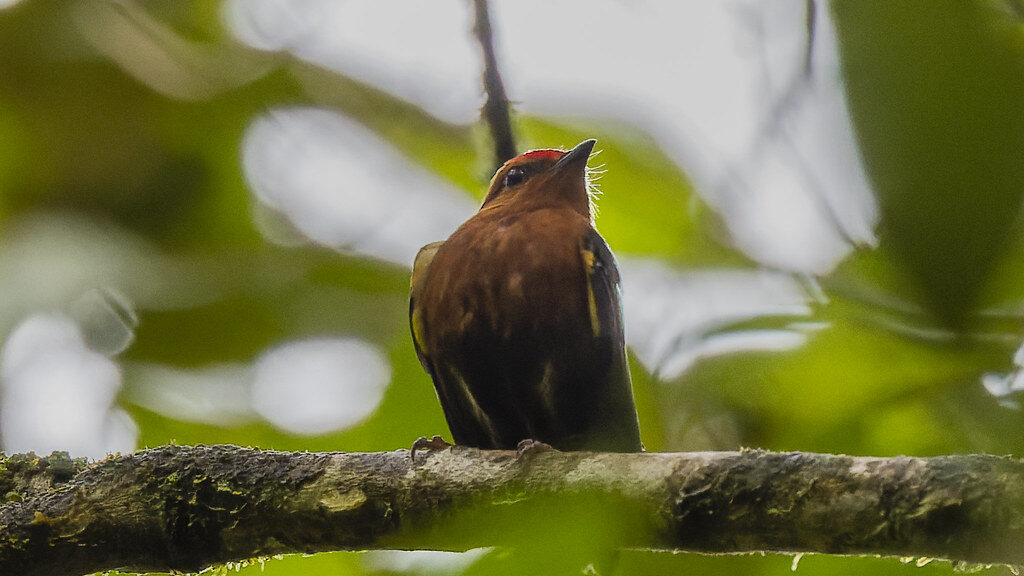
The Club-winged Manakin’s extraordinary wing adaptations represent a classic example of sexual selection – the process by which certain traits evolve because they provide advantages in securing mates, rather than enhancing survival. Research suggests that female manakins prefer males capable of producing the most intense and consistent wing sounds, driving the evolution of ever more specialized wing structures across generations. This preference has created a strong selective pressure that has reshaped wing anatomy despite potential costs to flight efficiency.
Phylogenetic studies indicate that these specialized sound-producing feathers evolved gradually over millions of years, with related manakin species showing intermediate stages of feather modification. The Club-winged Manakin stands as one of the most extreme examples of how sexual selection can drive the evolution of specialized anatomical structures dedicated primarily to courtship rather than survival functions.
Trade-offs Between Display and Flight
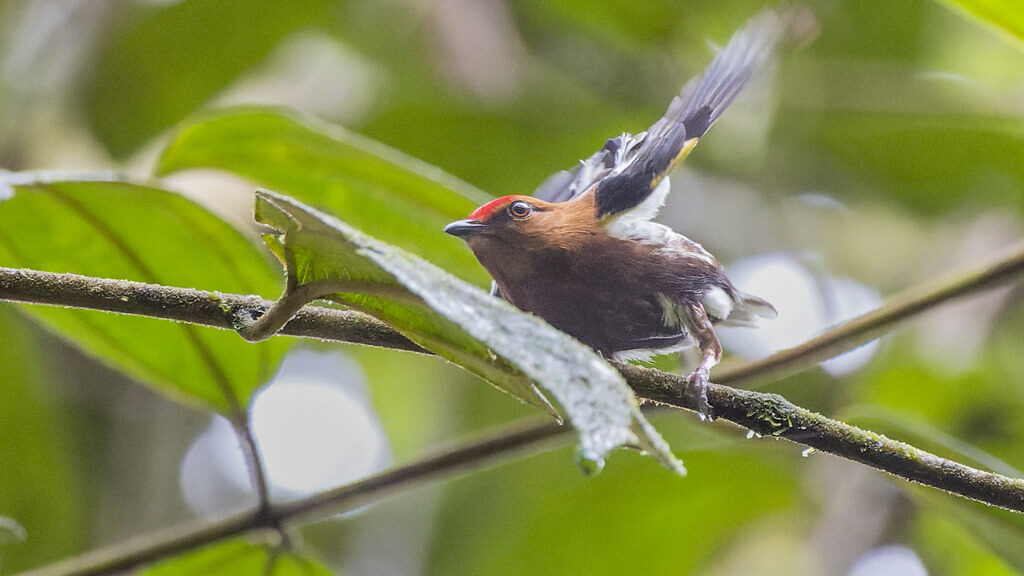
The specialized wing adaptations that enable the Club-winged Manakin’s impressive sound display come with significant costs to flight performance. Research published in the journal Proceedings of the Royal Society B revealed that the modified feathers reduce flight efficiency by approximately 35% compared to similarly sized birds without such adaptations. This reduction stems from increased wing loading and reduced lift generation due to the stiffened, club-shaped feathers that disrupt aerodynamic flow.
To compensate for these limitations, the birds have developed stronger flight muscles and modified flight behaviors, including shorter flight distances and more frequent rest periods. This trade-off between sexual display and locomotion efficiency represents one of the most extreme examples of how sexual selection can drive adaptations that would otherwise appear disadvantageous from a purely survival perspective.
Discovery and Scientific Investigation

Although indigenous communities in the Andes had long been familiar with the strange sounds of the Club-winged Manakin, the scientific discovery of its unique sound-producing mechanism occurred relatively recently. Initial observations were documented in the 1960s, but the precise mechanism remained a mystery until the early 2000s when researcher Kimberly Bostwick of Cornell University conducted groundbreaking high-speed video analysis of the wing movements.
Using cameras capable of capturing over 1000 frames per second, Bostwick was able to visualize the previously imperceptible wing movements and document how the specialized feathers interact to create sound. Her research, published in 2005, revolutionized our understanding of avian sound production and revealed one of the fastest known vertebrate movements – the Club-winged Manakin’s wings move so rapidly during sound production that they temporarily become a blur even to high-speed cameras.
Other Birds That Create Non-Vocal Sounds
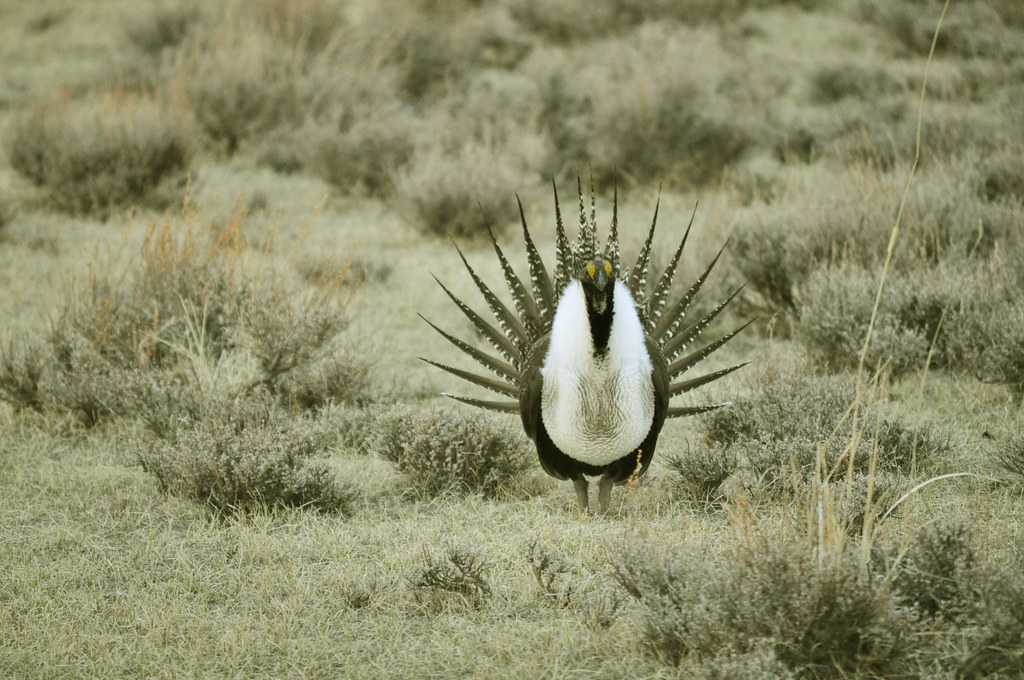
While the Club-winged Manakin’s wing sonation is particularly dramatic, it represents one example of a broader phenomenon of mechanical sound production in birds. The Greater Sage-Grouse produces popping sounds by inflating and deflating specialized air sacs during courtship displays. Woodpeckers drum on resonant surfaces not just for foraging but also for territorial communication, carefully selecting trees or structures that maximize sound projection.
Among hummingbirds, several species including the Anna’s Hummingbird perform spectacular diving displays during which specialized tail feathers produce high-pitched whistling sounds as air passes through them at high velocities. The Palm Cockatoo of Australia goes even further, crafting “drumsticks” from twigs which they use to beat rhythmically against hollow trees during courtship – the only known example of a non-human animal creating a tool specifically for sound production.
Conservation Status and Threats

The Club-winged Manakin currently holds a conservation status of “Least Concern” according to the International Union for Conservation of Nature (IUCN), but localized populations face significant threats. Deforestation in the western Andean slopes of Colombia and Ecuador continues to fragment and reduce the cloud forest habitats these specialized birds require. Climate change poses an additional threat, as rising temperatures alter the humidity levels and vegetation composition of montane forests where these birds have evolved to thrive.
Conservation efforts focusing on protecting larger intact forest corridors along the western Andes have proven beneficial for maintaining healthy populations of Club-winged Manakins along with many other endemic species. Research suggests that these birds require relatively undisturbed forest with specific understory plants for successful breeding, making them potential indicator species for overall forest health.
Cultural Significance and Indigenous Knowledge

The distinctive sounds of the Club-winged Manakin have earned it a place in the cultural traditions of indigenous communities throughout its range. Among certain Chachi communities of northwestern Ecuador, the bird’s mechanical sounds have been incorporated into traditional stories explaining natural phenomena, with its buzzer-like noise associated with rain and forest renewal. Some local names for the bird translate roughly to “little thunder maker” or “rain announcer,” reflecting observations of its display behavior often coinciding with the onset of seasonal rains.
Indigenous knowledge has proven valuable to scientific research, with traditional ecological knowledge helping researchers locate display sites and understand seasonal patterns of breeding activity. This integration of traditional and scientific knowledge represents an important component of contemporary conservation approaches in the region.
Future Research Directions

Despite significant advances in our understanding of the Club-winged Manakin’s unique adaptations, many aspects of its biology remain poorly understood and represent exciting frontiers for future research. Ongoing studies aim to better understand the neurological mechanisms that enable the precise muscle control required for the incredibly rapid wing movements. Acoustic ecology research is examining how climate change and forest fragmentation may affect sound transmission in the bird’s habitat, potentially disrupting mating systems that rely on long-distance sound propagation.
Evolutionary biologists continue to investigate the genetic basis for the specialized wing feathers, seeking to identify the specific genetic changes that drove this remarkable adaptation. Additionally, comparative studies with related manakin species are helping to reconstruct the evolutionary pathway that led to the development of this extraordinary sound-producing mechanism from more conventional wing structures.
Conclusion: Nature’s Winged Instrument
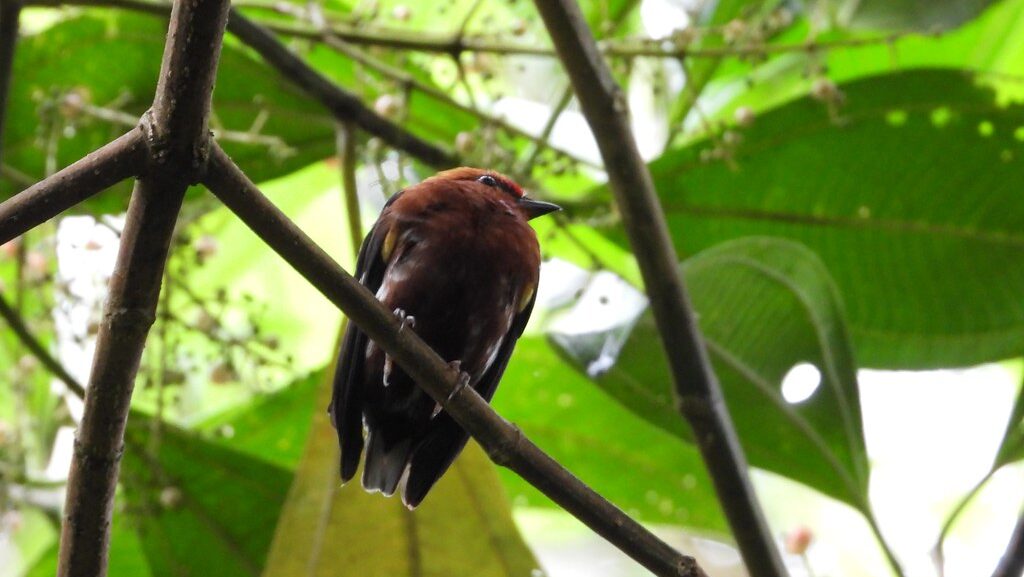
The Club-winged Manakin represents one of nature’s most extraordinary examples of specialized adaptation for communication. Through millions of years of evolution driven by female choice, this small forest bird has developed what amounts to a built-in percussion instrument – transforming its wings from structures designed primarily for flight into sophisticated sound-producing tools. The buzzing wing sounds of this remarkable bird remind us that natural selection can produce adaptations that seem almost engineered in their precision and specialization.
As scientists continue to unravel the complexities of how and why this unique system evolved, the Clubwing Manakin stands as a testament to the power of sexual selection to drive the evolution of some of nature’s most spectacular and surprising adaptations. In the continuing symphony of evolution, few performers can match the impressive acoustic engineering of this small but mighty forest musician.
